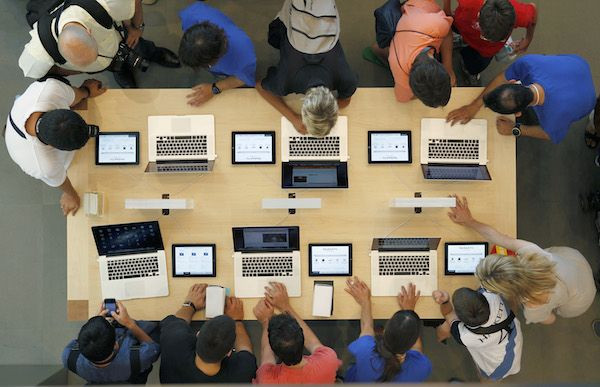Apple Mac Tip: How To Share Screen Without Using iMessage

KEY POINTS
- Macs have a feature called Screen Sharing
- This feature allows Mac users to share screens with other Mac users
- The feature can be used via iMessage or by using Apple IDs
Screen Sharing is one of the more useful features that the Mac has, especially for those who tend to be the run-to person for fixing problems. This feature allows users to gain remote access to another Mac, which then allows the user to do whatever he or she needs to do with the other computer, whether it's to fix certain problems, or to teach other users how some things are done.
Screen Sharing is easy to initiate, Cult of Mac noted. It's as simple as sending a request to a contact via iMessage, waiting for their permission, and voila – remote access is granted. The user can take control of the other party's Mac, or he can share his screen to the other person, depending on their needs.
Sometimes, however, using the feature via iMessage isn't possible. It could be that the other party doesn't use iMessage, or that the user doesn't want to add the other party as an iMessage contact. If this be the case, there's still a way to do it, Six Colors noted.
There are actually two ways to do this, both of which results in accessing the feature via the Screen Sharing app. Here's how to do it:
- The long way
First, users need to go to Macintosh HD, then to System, then Library. Once there, users should proceed to CoreServices, then to the Applications folder. Once there, users should look for the Screen Sharing app.
- The short and easy way
In order to access the app easily, users will simply need to press the Command key and Space to open Spotlight, type “screen sharing,” and launch the app.
Once the Screen Sharing app is up and running, it will ask users for an Apple ID. Users should enter the Apple ID used by the person who wants or needs to be sharing screens with the user. This gives users remote access to the other Mac. The feature, however, is limited to the Mac only – it doesn't work with iPhones and iPads.
Nevertheless, this kind of feature is important nowadays, considering how people need to stay at home to keep themselves safe from the current COVID-19 outbreak. This will help Mac users fix problems on their parent's Macs at home, fix the issues plaguing Macs at work, or to teach a younger one about how to do this or that on his or her Mac. All of these while applying social distancing.
© Copyright IBTimes 2024. All rights reserved.





















